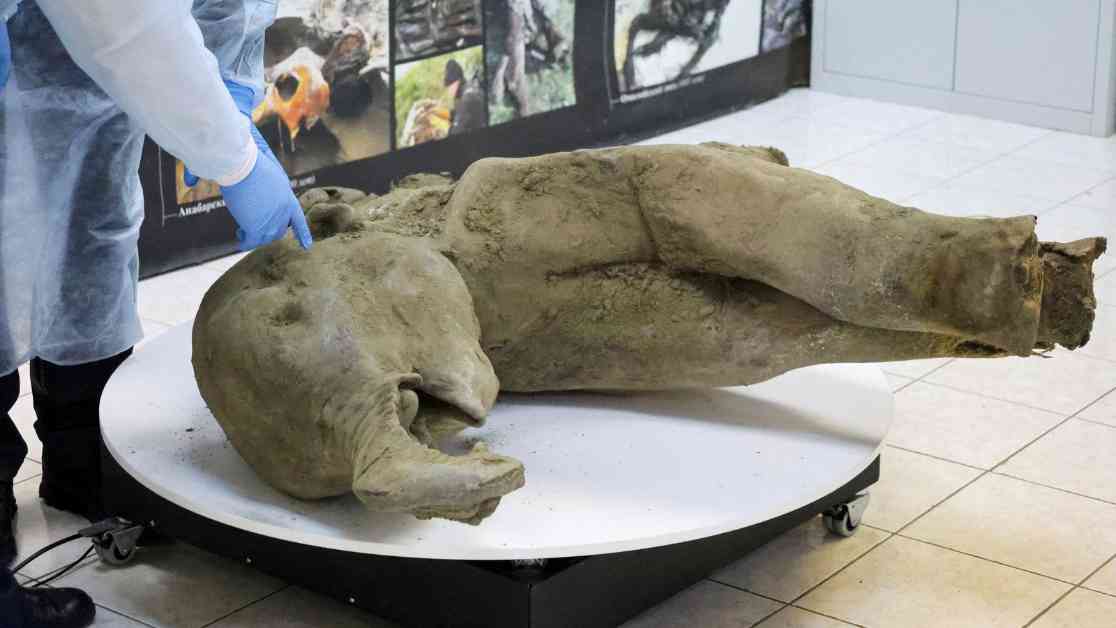Scientists have recently unveiled the remarkably well-preserved remains of a baby mammoth found in thawing permafrost after more than 50,000 years. The discovery took place in the Batagaika crater in Russia, a massive crater over 80m (260ft) deep that is expanding due to climate change. The carcass, weighing more than 110kg (240lb), was carefully retrieved to the surface on an improvised stretcher by researchers from the Lazarev Mammoth Museum Laboratory in Yakutsk, led by Maxim Cherpasov.
Unusual Preservation
Cherpasov revealed that the mammoth was likely just over a year old at the time of its death, with further tests planned to confirm this detail accurately. What makes this discovery particularly unique is the exceptional preservation of the mammoth’s head and trunk. Typically, these parts are the first to thaw out and become prey for modern predators or birds. However, in this case, even though the forelimbs had been consumed, the head remained remarkably intact.
Series of Discoveries
This finding adds to a string of remarkable discoveries in the Russian permafrost region. Just last month, scientists in Sakha or Yakutia unveiled the 32,000-year-old remains of a tiny sabre-toothed cat cub, showcasing the rich history preserved in the icy landscape. Earlier this year, a 44,000-year-old wolf carcass was also unearthed, highlighting the scientific importance of these regions for studying ancient life forms.
Ongoing Climate Impact
The exposure of these ancient relics is a stark reminder of the ongoing impact of climate change on our planet. As permafrost thaws and landscapes transform, previously frozen specimens are surfacing, providing scientists with invaluable insights into Earth’s past. The race to study and preserve these remains intensifies as environmental shifts continue to reshape our world.
This recent mammoth discovery not only sheds light on prehistoric life but also underscores the urgency of addressing climate change to protect our planet’s history and future. As we uncover more secrets hidden in the ice, may we also find the resolve to safeguard our planet for generations to come.










